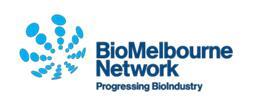
Posted: 28 May 2025
The COVID-19 pandemic demonstrated the urgent need for better understanding of how viruses interact with our lungs. That’s the focus of the Doherty Institute’s Associate Professor Ash Haque and his team’s work: using a new technology called spatial transcriptomics – which enables researchers to look at almost every single cell type within an organ – they’ll create a detailed model of human lungs at the cellular level.
What is spatial transcriptomics?
Spatial transcriptomics is a revolutionary technology that allows scientists to examine and interpret thousands of possible cell interactions and understand nuanced characteristics within the tissue they naturally reside in. It enables understanding of cell types and cellular interaction at an entirely new level: the data sets available now are exponentially more advanced than what we had just a few years ago.
“Thanks to technology advancement over recent years, we’ve seen a quantum leap in our understanding of cellular interaction. Where we could previously ‘ask’ a cell what it might do in 10 different situations, we can now ask questions for thousands of possible scenarios,” explains Associate Professor Haque.
“This level of detail can give you clues as to why cells behave in certain ways and point to new applications for existing medicines or new therapies. Cells behave differently depending on the tissue they’re in, so understanding more about cells in their natural context rather than a Petri dish gives us critical insights into how the lungs respond during infection.”
The lungs are particularly complex structures and comprising different cell types with distinct functions. Understanding how this cellular community behaves during viral infection is critical to developing targeted therapeutics for viruses of pandemic potential.
To find out more about the vision behind the project, click here.



